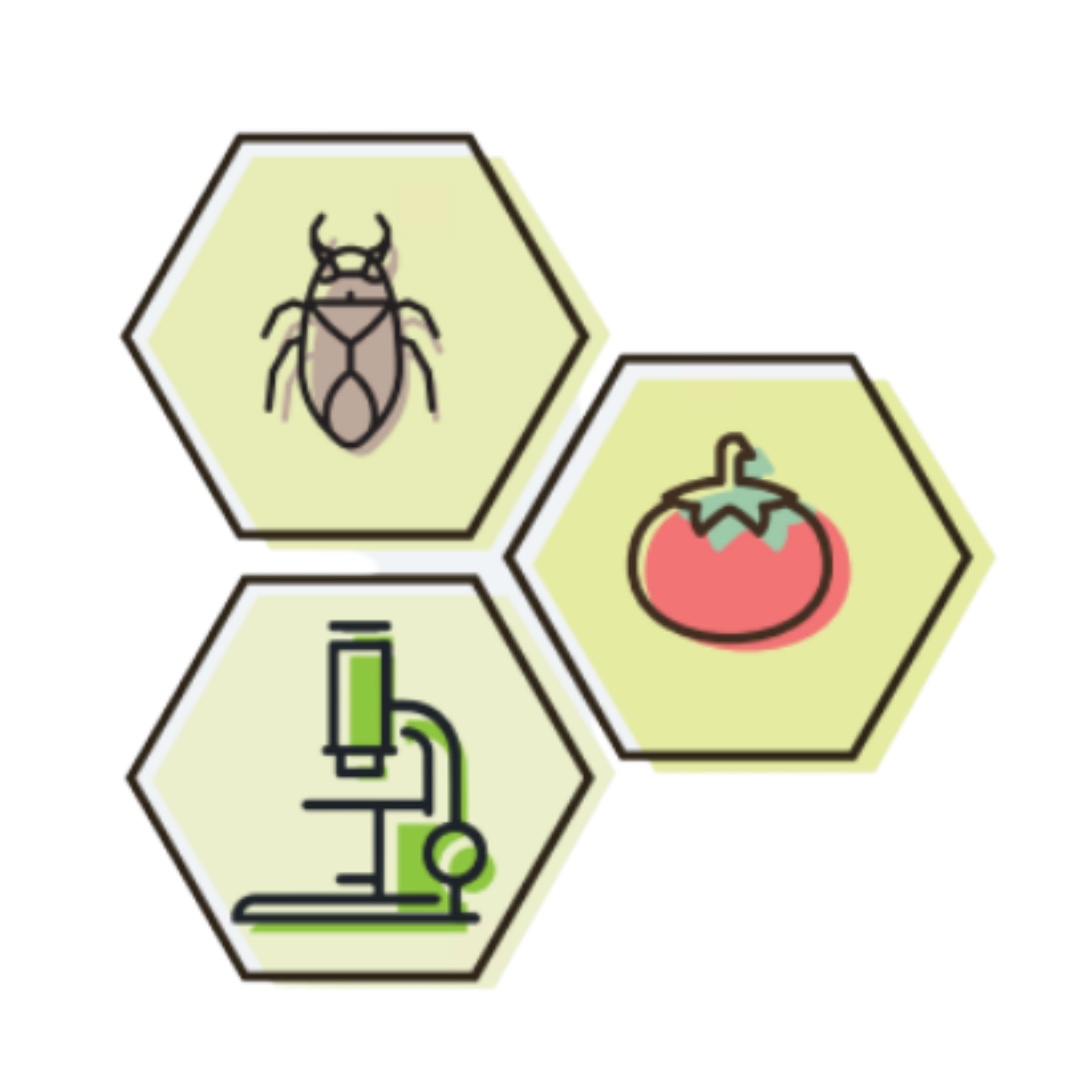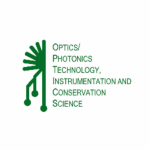RESEARCH UNITS
Dr. Jose Isagani Janairo
Unit Head

Biological Control Research Unit (BCRU)
The Biological Control Research Program covers the full spectrum of disciplines in biological control. The main focus of the Research Program is to develop pest management through new and improved management strategies, tools, and techniques ranging from biological control agents, bio-traps, and natural pesticides. The program will conduct basic and applied research in managing agri-cultural, medical, and urban pests, in partnerships with industry whenever feasible.
The main goal of the BCRU is to promote biological control awareness. Farmers and other practitioners have been used to the traditional methods of spraying chemical pesticides; therefore, it is imperative that this awareness be created at the grassroots level. The unit plans to develop and disseminate materials and training modules on biological control for researchers, field technicians, and most especially farmers. Long-term collaborations with both government and private institutions will be established, and the expertise of De La Salle University faculty researchers will be made available to enhance the impact of the educational, research, and extension programs of these institutions.
Dr. Emelina Mandia
Unit Head
Microalgal Systematics and Applied Phycology Research Unit (MSAPRU)
The Microalgal Systematics and Applied Phycology Research Unit (MSAPRU) is an interdisciplinary subunit of CENSER that focuses on the biology, biochemistry, biophysics and biotechnological applications of microalgae. Its establishment was propelled by the expanding research initiatives on bio-energy in DLSU. It brings together the researchers within the College of Science who are also actively engaged in the establishment of the Algae BioInnovation Global Hub (Algae BIG Hub) being spearheaded by the College of Engineering, Mechanical Engineering Department.
The MSAPRU shall embark on the identification of microalgal strains from both marine and freshwater habitats, maintain culture collection, conduct biochemical and biophysical studies, and explore various biotechnological applications of microalgae, particularly in-line with biofuel production, nutraceuticals and extraction of bio-active compounds.

Dr. Derrick Ethelbert Yu
Unit Head

Materials Science and Nanotechnology Research Unit (MANA)
The Materials Science and Nanotechnology Unit focuses on the synthesis, fabrication and characterization of Semiconductors, Superconductivity, Conducting Polymers, Biomaterials, Nanomaterials, and Other Smart and Functional Materials.
The research group studies how the large scale properties of solid materials result from their atomic-scale properties, we call nanomaterials. Our group has direct applications in nanomaterials, conducting polymers, solar technology, gas sensor, biomaterials, and other smart and functional materials.
Our group also provides technical support for companies and universities involved in the preparation and characterization of new materials, failure analysis of commercial products either manufactured locally and abroad. We also provide exclusive training for students and industry who intends to learn failure analysis, high vacuum technology, and different characterization techniques.
Dr. Maria Cecilia Galvez
Unit Head

Applied Research For Community, Health, And Environment Resilience And Sustainability (ARCHERS)
ARCHERS is one of the Research Unit under the Center for Natural Science and Environmental Research (CENSER) of De La Salle University. The group is composed of researchers with a fervent desire of contributing towards the protection of the Earth’s fragile environment and resources. Researchers include basic/fundamental research, applied research, instrumentation development, computational modeling along with its application to human society.
Dr. Vincent Ng
Unit Head
Natural Products and Drug Development Research Unit (NPDDRU)
The Natural Products and Drug Development Research Unit aims to top and harness the rich, unique and indigenous flora of the country for novel compounds and test for bioactivities against human cancer cells, anti-inflammatory and cytoprotective activities against oxidative stress. These include phytochemical profiling of each plant, isolation, structure elucidation, individual testing of compounds for pharmacological applications, and synthesis and derivatization of bioactive constituents. The ultimate goal is to provide cheaper, accessible and on-toxic preparations for the treatment of degenerative human diseases especially for the marginalized and under-privileged people of the country.

Dr. Angelyn Lao
Unit Head
Systems and Computational Biology (SComB)
SComB is a research Unit that integrates computational, mathematical and statistical modeling approaches to better understand the complexity of biological, medical and agricultural systems. To elucidate the causes and consequences of a system/network, models are built. Models provide an abstract representation of observable principles. These models are not a substitute for careful empirical observations, but instead are tools to assess hypotheses about the dynamic properties of a system and the mechanisms underlying the observations. Through the systematic approach that we will use, modeling the theoretical properties of a complex system/network is made more plausible.


Dr. Al Rey Villagracia
Unit Head
Advanced Nanomaterials Investigation by Molecular Simulations (ANIMoS )
The ANIMoS focuses on the fundamental science in the physical and chemical processes in nanomaterials growth, unique properties, fabrication of novel devices, and their unique applications in materials for electronics, energy and biomedical science. Our research is in the following directions:
- Understanding of hydrogen surface and interface reactions
- Realization of the hydrogen-based economy
- Integration of nanosystems with biomedical science
- Materials design for emotion detection devices
- Understanding mechanisms and solutions for bio-energy/biofuel processing and production such as microalgae
- Designing nanomaterials for electrical and magnetic devices, optoelectronics, and gas sensors

Dr. Michelle Natividad
Unit Head

Computational Materials Design Research Unit (CMDRU)
The research thrust of the Condensed Matter Laboratory is the development of new materials for solid oxide fuel cell applications, working electrodes for heavy metal detection, and new prototypes of batteries based on magnesium and its compounds. The research lab fabricates solid electrolytes like YSZ and Nafion-modified thin films using spin coating, dip coating, and drop coating techniques. The lab also fabricates electrodes for sensor applications, as well as, solid state rechargeable batteries based on magnesium and persulfate. Morphological characterization is done by Raman Spectroscopy, X-Ray diffraction, EDX, and Scanning Electron Microscopy. Transport properties are measured by voltammetry methods. Real sampling analysis is done by stripping voltammetry. Results using statistical analysis are compared with those obtained from theoretical models.
Dr. Ma. Carmen Ablan Lagman
Unit Head
Practical Genomics Laboratory (PRACGENOME)
Developing technologies to address issues for conservation and sustainable use of biodiversity in agriculture and aquaculture integrating genomics, image analysis, GIS mapping and low-cost tissue cultures.

Dr. Romeric Pobre
Unit Head


Optics/Photonics Technology, Instrumentation And Conservation Science (Optics)
OPTICS Research Group strives to advance the fundamental understanding of light-matter interaction at different space and time scales. It endeavors to formulate appropriate physical design and solution to various interfaces of current technologies (i.e. nano-technology, bio-technology, laser-technology and others). It facilitates discovery and innovation in Physics by cultivating multi-disciplinary strategies to address scientific problems in our ever changing society. It is also all-inclusive in style as it incorporates theoretical, computational, and experimental approach of conducting research studies. It focuses on unique applications in Optics and Photonics for the other emerging technologies in Biotechnology and Nanotechnology. It currently focus on unique applications of Physics but not limited to Sports Science, Molecular Science, Materials Science, Medicine, and Cultural Heritage.
The OPTICS Research Unit envisions itself as an advocate of optics and photonics awareness in Philippine society. Committing to the research unit means coherent growth in academic advancement, network expansion, and professional development.
Dr. Zeba Alam
Unit Head

Environmental Biomonitoring Research Unit (EBRU)
The Environmental Biomonitoring Research Unit is dedicated to conduct research using biomarkers to assess the levels of environmental pollution and come up with sustainable solutions that can be applied locally as well as globally. The EBRU will conduct studies involving standardization of existing and new assay methods and identification of efficient biomarkers for the short term and long term monitoring of the aquatic and terrestrial ecosystems to assess the toxicity levels of contaminants and pollutants.
The goal of the EBRU is to contribute towards environmental sustainability by conducting research to arrive at effective and efficient strategies for environmental management there by reducing the impact of toxic levels of pollution on the human health and the overall environment. The program also aims to integrate biotechnology, toxicology, and molecular biology to provide solutions for mitigation of the toxicity using bioremediation processes.
Dr. Drexel Camacho
Unit Head

Organic Materials and Interfaces (OMI)
The Organic Materials and Interfaces unit is an interdisciplinary research laboratory of the Center for Natural Science and Environmental Research (CENSER) under the Office of the Vice Chancellor for Research and Innovation (VCRI). It focuses on the use of organic compounds for materials applications and in the interface with other disciplines. The research group designs new materials tuning the properties of organic compounds, both synthetic and natural, for interface with other fields. It includes synthesis of functional organic and polymeric materials, the design of drug and drug delivery systems, fabrication of organic electronic devices, preparation of nanomaterials, characterization of new materials, development of composites, valorization of biomass, and degradation of materials. These materials are used in interface with other filed through sensing, solar cells, catalysis, antimicrobial action, food fortification, plant growth promotion, packaging, among others.

